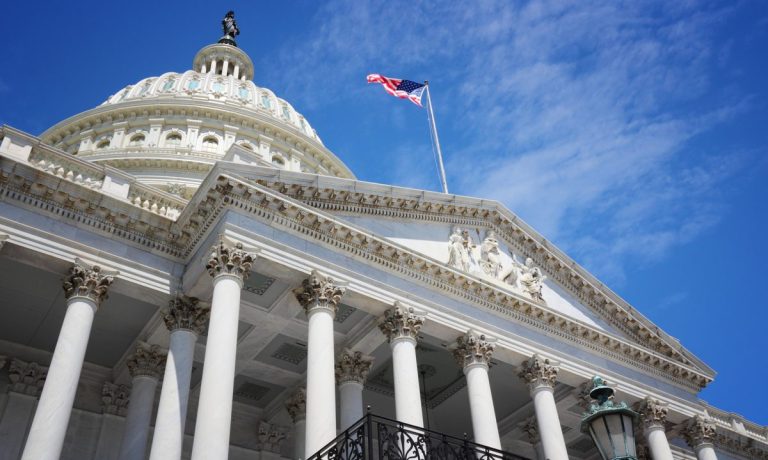
Congress has rebranded cryptocurrency to “digital assets,” but still can’t chart a go-ahead future.
As evidenced by two hearings held in tandem Thursday (April 27) by the Digital Assets, Financial Technology and Inclusion Subcommittee and the Commodity Markets, Digital Assets, and Rural Development Subcommittee, the congressional intent for a viable market structure supported by clear rules of the road is clear.
It is how to get there that remains up for debate.
Meanwhile, private sector financial services leaders including Visa and J.P. Morgan (JPM), among others, are making moves to jumpstart their own digital asset roadmaps.
Visa’s roadmap, as reported by PYMNTS, includes stablecoin payments — while JPM is looking to “tokenize traditional finance.”
“We have a unique opportunity as Members of this Subcommittee to be on the cutting edge of creating a functional framework for the digital asset ecosystem,” Chairman of the Digital Assets and Financial Technology subcommittee, Rep. French Hill, R-Ark., said to kick off Thursday’s hourslong hearing titled, “The Future of Digital Assets: Identifying the Regulatory Gaps in Digital Asset Market Structure.”
“Currently, the SEC [Securities and Exchange Commission] and CFTC [Commodities Futures Trading Commission] disagree on the classification of many digital assets, which is unworkable for entrepreneurs and consumers. The agencies need direction from Congress,” the subcommittee chair added, saying that lawmakers needed to “take a deep dive into the regulatory environment … and lead in the right way.”
Read more: SEC Chair Gensler Defends Crypto Crackdown in Contentious House Hearing
In a joint statement published in advance of the two hearings, chairman of the House Financial Services Committee, Patrick McHenry, R-N.C., chairman of the House Agriculture Committee, Glenn “GT” Thompson, R-Pa., and the two chairs of the respective Digital Assets subcommittees, Hill and Dusty Johnson, R-S.D., said of their combined efforts, “We are committed to finding workable solutions that provide much-needed regulatory clarity and certainty, while still adhering to time-tested principles that protect market participants.
“It’s clear digital assets, and their underlying blockchain technology, hold real promise,” emphasized the lawmakers. “The transformational nature of this technology also creates regulatory challenges affecting both the House Agriculture and Financial Services Committees.
“Two committees working hand in hand on a joint legislative product like this is unprecedented, and I believe it vastly increases our chances of getting it right,” Hill said.
“Digital asset developers, users, and institutions need clear, thoughtful rules of the road,” Thompson added.
In an interview with PYMNTS CEO Karen Webster last October, before Republicans gained control of the House, McHenry said that digital asset legislation, particularly around stablecoins, was definitely “on the agenda.”
“A lot of ink has been spilled on digital assets, their value, their purpose, and their ultimate benefit to society,” Johnson said. “The difficult task we are starting today is to craft a legislative framework.”
The two congressional committees will next month hold a joint subcommittee hearing to craft legislation meant to provide regulatory clarity and certainty, while still adhering to time-tested principles that protect market participants.
The European Union (EU) has already passed a landmark regulatory framework designed specifically to help legally integrate cryptocurrency into its marketplace.
“Absent legislation, our regulators are only pushing entrepreneurs, developers, and job creators offshore,” Hill said.
“I think all of our assets are already digital,” witness Hilary Allen, a professor at American University who teaches banking and securities law, told the assembled lawmakers.
“A lot of these assets are dual-purpose and are difficult to classify, as they contain both speculative and utility aspects,” said witness Zach Zweihorn, a partner at the Washington, D.C., law firm Davis Polk & Wardwell who specializes in securities regulation, adding that classification would likely need to include a utility threshold.
A third witness, Daniel Gorfine, who once served as the chief innovation officer for the CFTC, added, “The problem with the term digital assets is its incredibly broad.”
“We have to be careful because regulations look at what an asset is, because there are things that may fall outside of both commodity and security [definitions],” Gorfine said.
Not so, according to SEC chair Gary Gensler.
“Nothing about the crypto markets is incompatible with the securities laws. … The vast majority of crypto tokens are securities. It’s the law; it’s not a choice,” he said in a House hearing earlier this month. “Calling yourself a DeFi platform, for instance, is not an excuse to defy the securities laws.”
As for what happens next, and what hope there is for an effective go-ahead landscape for digital asset innovation in the U.S.?
Maybe next month’s joint hearing will provide some of the clarity that lawmakers have repeatedly emphasized they are both after, and ultimately responsible for.